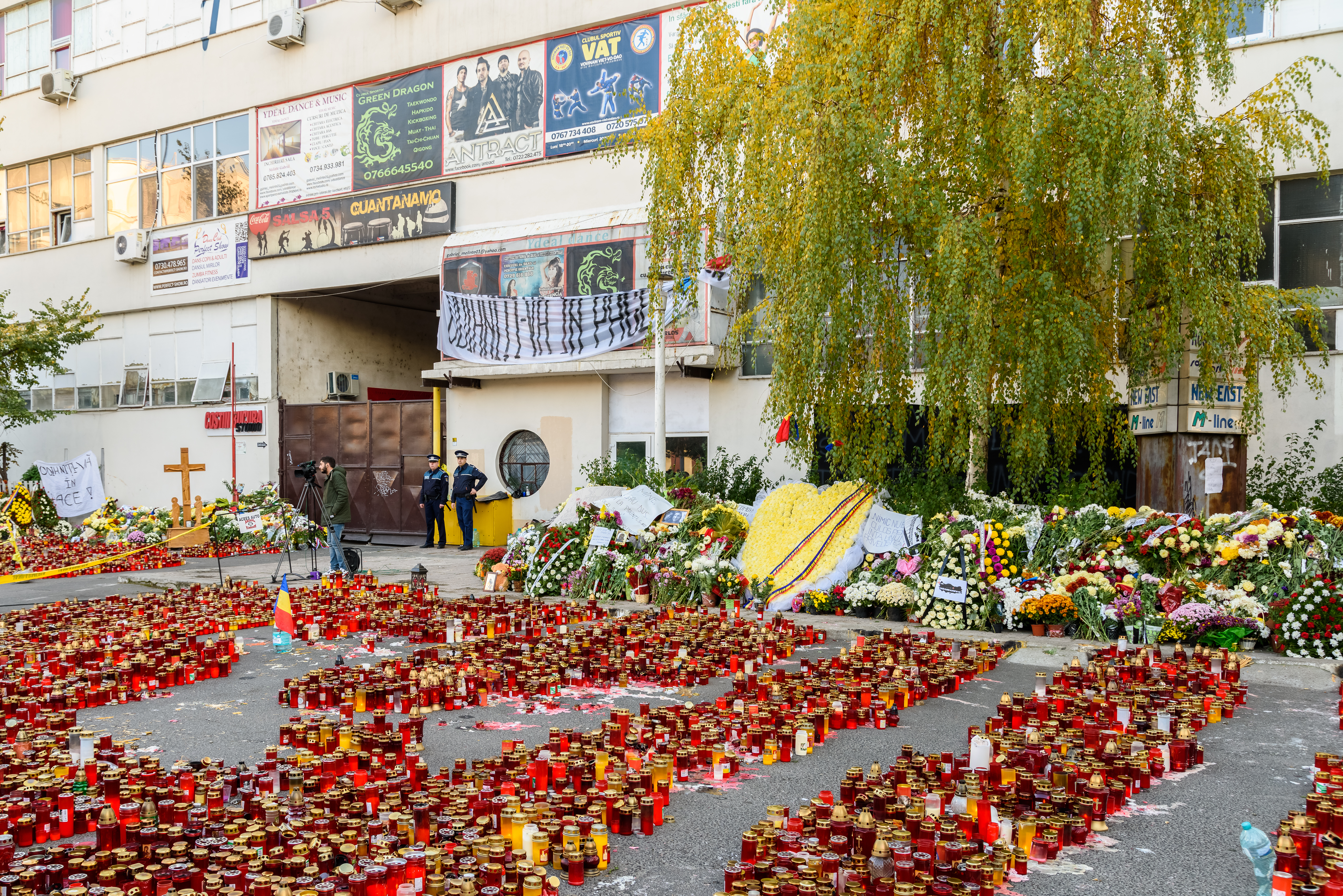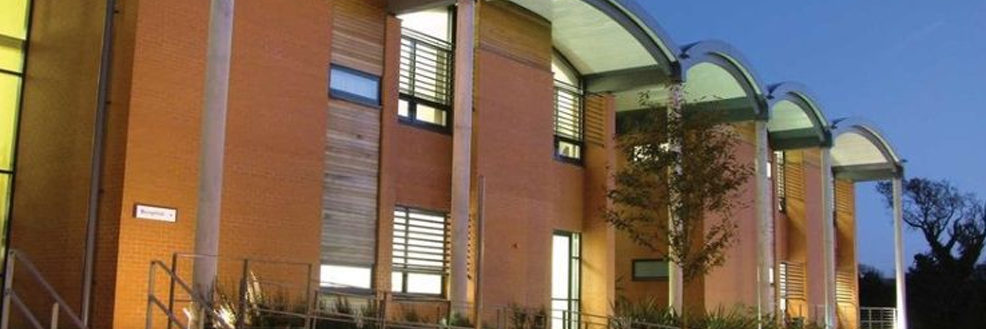
Jerry Beere, who is currently taking the online Masters in Corruption & Governance course, looks at the film Colectiv, and what it can tell us about corruption in Romania and beyond – as well as the roles that film and art can play in communicating the complex causes and consequences of corruption.
In 2015, 64 people died following the Colectiv nightclub fire in Bucharest. Corruption, in the form of unenforced building regulations and entertainment permits, was probably a contributing factor. But less than half died in the fire itself. The others succumbed to hospital-acquired bacterial infections. Why this happened is the focus of Alexander Nanau’s refreshingly un-narrated 2019 documentary Colectiv, a bleak indictment of corruption in the Romanian Healthcare system that has several points of interest for corruption analysts.
The documentary gives a starring anti-corruption role to the independent press. Without the tenacious reporting of Cătălin Tolontan and his increasingly outraged colleagues at Gazeta Sporturilor (a sports newspaper, the mainstream press having declined to pursue the story), it is unlikely the healthcare scandal would have come to light. The journalists’ dogged research leads them to the firm of Hexi Pharma which supplied 200 Romanian hospitals with disinfectants. Tolontan has the disinfectants analysed and finds that the active ingredient, which should constitute 12.8% of the product, was in fact, on average, 1.23%. The disinfectants had been watered down and were incapable of the deep cleaning required to prevent hospital acquired infections.
Further investigations reveal that the owner of Hexi Pharma, Dan Condrea, (Romania’s very own Harry Lyme) was operating a classic offshore scam. A company owned by Condrea and his wife in Cyprus bought the raw materials for the disinfectant at market prices and then resold them to Hexi Pharma at inflated prices. Condrea used this dark money to bribe hospital managers in Romania to buy Hexi Pharma disinfectants. He later died in a car crash which the inquest unexpectedly concluded was suicide.
But why are the managers corrupt? Is this just the burns hospital or all Romanian hospitals? And what are the politicians doing – or not doing – about it? Nanau wants to show that this is not just a question of watered-down disinfectant. That is only one manifestation of a very large problem. He shifts the focus from the heroic journalists to the new Minister for Health, Vlad Voiculescu and expands the exposé to include the whole Romanian Health system. Voiculescu was a civil society activist, appointed as part of a technocratic government after the Social Democratic Party (PSD) resigned following massive popular protests in the wake of the Colectiv fire.
The journalists stalk a hospital manager, Professor Secureanu, to his large, newly built, very ugly house, apparently funded by the corrupt rents he earns from his job. Secureanu is recorded berating his staff in decidedly unmedical terms. “Stop this shit or fxxx off. Fxxx you, I’m the manager. Stupid cxxx, I gave you your job.” One eavesdropping journalist asks, bemused, “Is this guy even a Professor?”
A whistleblowing doctor informs the new Health Minister Voiculescu – and shows him gruesome video footage – of a patient who has been neglected for so long that maggots are feasting on his wounds. Voiculescu, appalled, wants to sack all the hospital managers in Romania and rewrite their contracts, putting the safety and wellbeing of patients first. He lacks the power to do this.
Most alarmingly, he learns that a Bucharest Hospital, cleared by the appropriate body to perform lung transplants, does not actually meet the regulatory requirements to do so. The implication is that the hospital and most of the managers are well protected by the Social Democratic party and their media allies. Voiculescu is gradually reduced to a powerless, temporary administrator, openly declaring to his staff that “the whole system is rotten.”
The more Voiculescu learns about the hospital system the more he realises that it is “90% corrupt and demoralized,” and that most managers are unqualified for their jobs, having bribed their way in, attracted by the high rents on offer to senior staff.
By the end of the film, it is clear that anti-corruption is on the defensive, battered by shadowy, menacing figures, both criminal and political. Tolontan and his journalist colleagues receive telephone warnings from anonymous callers, threatening them and their families with extreme violence if they don’t stop their investigations. The journalists are left frightened by the threats, uncertain how to proceed. And Voiculescu’s stubborn idealism is ultimately defeated and deflated by that great enemy of anti-corruption efforts, the triumphant return to power of a corrupt party. As the Social Democrats sweep back with nearly half the vote, he plangently whispers, “I am wondering if any of the measures I took will last.”
Colectiv highlights the role – and limitations – of the free press in anti-corruption efforts and the difficulties of effecting reform in the absence of political will but it is no dry analysis of Romanian corruption. Time and again, Nanau returns to the artist Tedy Ursuleanu, a victim of the fire and a very lucky survivor of the Romanian hospital system. Ursuleanu photographs herself half naked, face heavy with make-up, hair shaved short, a jagged, bare strip running front to back, like a grotesque centre parting. Her arms are a papier mâché patchwork of puckered skin grafts, the fingers of her right hand roughly severed at the first or second knuckle. Her left hand is a stump. Turning the disaster into art, she puts the prints on public display. She refuses to be depressed. “The only way is forward and up,” she declares. But the film, repeatedly lingering on the photographs, seems to insist that she is doing much more than just surviving.
Information on this scandal is widely available. The Wikipedia entry is decent and it has been well covered in the press. But without Nanau’s film, would we have understood quite so clearly how collaborative the anti-corruption effort was; or how powerless a seemingly powerful politician can be? Would we understand quite how urgent the need for reform is had we not seen maggots on a dying patient or the ravaged body of Tedy Ursuleanu, a stoic, defiant witness to the human cost of corruption? Let’s not underestimate the power of witness. As Primo Levi said: “I survived, I told the world, I testified.”


Leave a Reply